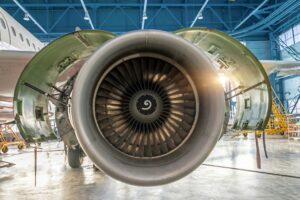Towards Safe Horizons: Unveiling the Mastery of Aviation Safety and Process Enhancement


In the ever-evolving realm of aviation, safety stands as the cornerstone upon which the entire industry is built. Behind the seamless journeys experienced by millions of passengers lies a meticulously crafted framework of expertise and innovation dedicated to ensuring safe skies. This article embarks on a journey to delve into the intricate world of aviation safety and process enhancement, exploring the depth of knowledge and practices that propel the industry towards safe horizons.
The Essence of Aviation Safety
At the heart of aviation safety lies a commitment to meticulous planning, stringent regulations, and continuous improvement. From the moment a flight is conceived to its safe arrival at its destination, every step of the journey is meticulously orchestrated to mitigate risks and ensure the safety of passengers and crew. Flight Safety encompasses a multifaceted approach that integrates technological advancements, regulatory compliance, and a culture of vigilance and accountability.
Elevating Standards through Regulation
Regulatory bodies such as the Federal Aviation Administration (FAA) in the United States and the European Aviation Safety Agency (EASA) in Europe play a crucial role in upholding safety standards within the aviation industry. These organizations establish and enforce regulations governing aircraft design, maintenance practices, pilot training, and air traffic management. By setting and enforcing stringent standards, regulatory bodies ensure that safety remains a top priority across the industry, fostering a culture of compliance and accountability.
The Human Element: Training and Expertise
While technological advancements play a significant role in flight safety, the human element remains irreplaceable. Aviation personnel undergo intensive training to handle any situation during flight operations. Training focuses on critical thinking, communication, and teamwork for confident crisis management.
Harnessing Technology for Safety
Technological advancements have transformed aeronautical safety, offering professionals tools to boost awareness and reduce risks. From avionics to predictive maintenance, each innovation bolsters safety. Emerging tech like AI and UAVs promise further enhancements, enabling autonomous operations and real-time risk assessment.
Continuous Improvement: Learning from Incidents
Despite the industry’s best efforts, aviation incidents and accidents do occur, serving as sobering reminders of the inherent risks associated with flight. However, each incident presents an opportunity for the industry to learn and improve. Aviation organizations conduct thorough investigations into incidents, analyzing data and identifying contributing factors to prevent similar occurrences in the future. By embracing a culture of continuous improvement and transparency, the aviation industry continually evolves and adapts to emerging safety challenges, ensuring that lessons learned are incorporated into safety protocols and procedures.
Streamlining Processes for Efficiency
In addition to ensuring safety, the aviation industry continuously seeks to enhance operational efficiency and streamline processes. From flight planning and scheduling to aircraft maintenance and ground operations, each aspect of the aviation ecosystem is subject to scrutiny and optimization. By leveraging data analytics, automation, and lean management principles, aviation organizations identify inefficiencies and bottlenecks, streamlining processes to improve turnaround times, reduce costs, and enhance the overall passenger experience.
Collaboration and Information Sharing
In an increasingly interconnected world, collaboration and information sharing are critical components of aeronautical safety. Aviation stakeholders, including airlines, regulatory bodies, manufacturers, and industry associations, collaborate to share best practices, exchange safety data, and address common challenges. Initiatives such as the Aviation Safety Information Analysis and Sharing (ASIAS) program facilitate the sharing of safety-related information and enable stakeholders to proactively identify trends and emerging risks, strengthening the industry’s collective ability to respond to safety threats.
Looking Ahead: Embracing the Future of Aviation Safety
As the aviation industry looks toward the future, the pursuit of safety remains a guiding principle. New technologies like electric propulsion and supersonic travel may reshape aviation, posing both opportunities and safety challenges. Additionally, the industry’s commitment to sustainability and environmental stewardship underscores the importance of balancing safety with social and environmental responsibilities. By embracing innovation and collaboration, the aviation industry will ensure safe travel for passengers, fostering confidence and peace of mind.
Aviation safety is a testament to the collective expertise, dedication, and innovation of the industry’s stakeholders. Every individual, from regulators to aviation professionals and researchers, upholds safety standards. Let’s stay committed to safety, facing new challenges with resilience and innovation to ensure safe journeys ahead. Safe skies await, guided by the unwavering dedication of those who make aviation security their mission.
